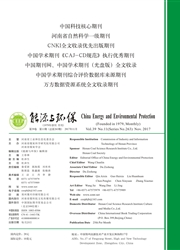

 中文摘要:
中文摘要:
地下煤炭资源的开采会引起地表沉陷,地表移动变形量的大小及其预测精度,对保护地面建(构)筑物及其生态环境等均具有重要意义。由于地表下沉受各种不确定因素的影响,可以看作灰色系统。基于灰色系统GM(1,1)模型,根据山东某矿区地表移动观测站实测资料,分别采用3次样条插值法、线性插值法、拉格朗日插值法,得到插值数据并进行GM(1,1)模型的预测,并对预测结果进行了分析,解释了预测结果具有差异性的原因。研究结果表明,对非等间隔数据采用不同的插值方法,预测的结果会有一定的差异,根据具体观测数据,选择不同的插值法,能够提高GM(1,1)模型对下沉值的预测精度。
 英文摘要:
英文摘要:
Mining underground coal can lead to surface subsidence. The precise prediction of the surface movement and deformation means a lot to the protection of ground construction( structure) and the ecological environment. Surface subsidence is subject to various uncertainties which can be regarded as a grey system. Based on the Grey System model GM( 1,1) and the measurement data from a sur-face movement observation station for a mining area of Shandong province, three cubic spline interpolation, piecewise linear interpolation and Lagrange interpolation were used to achieve interpolating data and the prediction of model GM( 1,1). The prediction result was ana-lyzed and reasons for the difference in prediction results were given. There is difference between the predictions achieved by the above three methods. Choosing right interpolation method according to specific data can improve model GM( 1,1 ) prediction accuracy of subsidence.
 同期刊论文项目
同期刊论文项目
 同项目期刊论文
同项目期刊论文
 期刊信息
期刊信息
